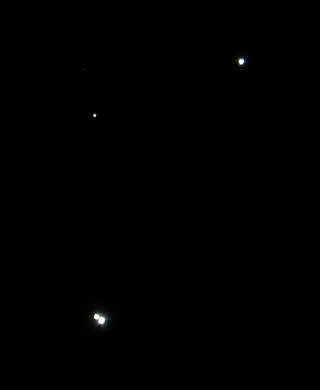Top Qs
Timeline
Chat
Perspective
Sidus Ludovicianum
Star in the constellation Ursa Major From Wikipedia, the free encyclopedia
Remove ads
Sidus Ludovicianum, also known as HD 116798,[6] is an 8th-magnitude star in the asterism of the Big Dipper in the constellation Ursa Major, halfway between Mizar and Alcor. A line-of-sight companion with Mizar and Alcor (with a spectral type similar to the latter), it is roughly four times more distant. It has the spectral type A8/F0 III.[4] That spectral class suggests it is a giant star, but evolutionary models place it on the main sequence.[1]

The star was observed on 2 December 1722 by Johann Georg Liebknecht, who mistook it for a planet and named it after Louis V, Landgrave of Hesse-Darmstadt. In different sources the name may be written as "Sidus Ludovicianum",[7] "Sidus Ludoviciana",[6] or "Stella Ludoviciana". Unknown to Liebknecht, it had been previously observed by Benedetto Castelli in 1616.[8]: 257
The star is six times more luminous than the Sun, 1.6 times its radius, and has a surface temperature of 7,200 K.[1] Spectral classification based on a spectrum taken for radial velocity measurement tentatively determined a spectral and luminosity class of A8/F0III,[4] which would indicate that it has exhausted its core hydrogen and started to evolve away from the main sequence, however giant stars of this type should be at least ten times more luminous than measured for Sidus Ludovicianum.[1] It shows evidence of Gamma Doradus pulsations, and is a likely member of a young stellar association known as Group-X.[9]
Remove ads
References
External links
Wikiwand - on
Seamless Wikipedia browsing. On steroids.
Remove ads

